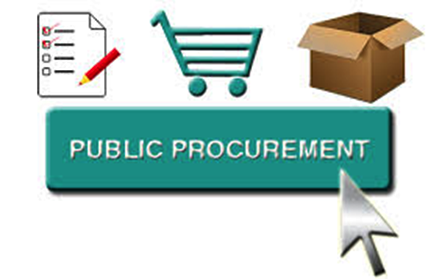The new era of EU Public Procurement and ESIF 2014-2020

By April 2016, all EU Member States must transpose into their national legislations the 3 Procurement Directives adopted by the EU in 2014 as part of the Public Procurement Reform:
- Directive 2014/23/EU on the award of concession contracts (“Concession Directive”),
- Directive 2014/24/EU on public procurement (“Classical Directive”) and
- Directive 2014/25/EU on procurement by entities operating in the water, energy, transport and postal services sectors (“Utilities Directive”).
In practice, this means that the new Procurement rules will organise the way public authorities purchase goods, works and services. The rules apply to contracts above certain thresholds. For tenders of lower value, national legislation will apply. Nevertheless, these national rules also have to respect the general principles of EU law (transparency, equal treatment, open competition, and sound procedural management).
The new legislation puts a strong emphasis on simplification as well as on innovation and sustainability. Here are some key changes brought by the new procurement rules:
“Most economically advantageous tender" (MEAT) as the new criterion for contract awarding
In addition to price, stronger legal bases are set for environmental, social and for total life-cycle costs criteria, for example: payment schedule, delivery time, operating costs, efficiency and compatibility of equipment, availability of service, related training, safety and environmental factors etc.
Simplification of procurement procedures and documentation
- Minimum deadlines for procedures will be shorter.
- European Single Procurement document will allow all businesses to electronically self-declare that they meet the necessary regulatory criteria or commercial capability requirements; only the winning company will need to submit all the documentation proving that it qualifies for the contract.
- Required annual turnover of bidders must not be higher than twice the contract value.
- Splitting into lots becomes the rule.
For more information on the new procurement rules, you can access the attached brief.
There is a strong link between EU public procurement rules and the spending of the EU Structural and Investment Funds in the EU countries. In order to get access to ESIF 2014-2020, EU countries need to demonstrate that they fulfil specific conditions related to procurement:
- Appropriate mechanism for the application of EU public procurement rules
- Transparent contract award procedures
- Administrative capacity for implementation and application of public procurement rules
- Training and dissemination of information for staff involved in the implementation of ESIF
The financial consequences of not respecting the EU procurement law can be significant. When irregularities in public procurement are identified, corrections have to be made and the EU funds paid back.
Did you know that:
- Every year, over 250 000 public authorities in the EU spend around 14% of GDP on the purchase of services, works and supplies?
- 48% of the EU funds pass through public procurement?
- In 2015, the European Commission together with Transparency International launched an instrument called “Integrity Pacts”?
- Integrity Pacts are essentially agreements between the government agency offering a contract (contracting authority) and the companies bidding for it (tenderers) that they will abstain from bribery, collusion, extortion and other corrupt practices for the extent of the contract?
If you want to stay ahead of the game and understand the EU funding and procurement rules that apply to your projects, our team of experts can assist you with targeted EU funding programmes and training sessions.
Disclaimer: “As Schuman Associates is not a law firm, this should not be treated as legal advice."
By accepting you will be accessing a service provided by a third-party external to https://www.schumanassociates.com/
